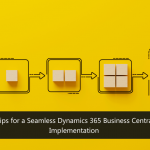
Are you making decisions based on bad data? It’s hard to answer that question because, truth be told, you don’t know you’re using bad data until it’s too late.
A Gartner study states that about 40 percent of enterprise data is either inaccurate, incomplete, or unavailable. This poor data quality translates into an average of $15 million per year in a ripple effect of financial loss, missed opportunities, and high-risk decision making. Why? Because bad data is the reason behind poor analytics.
We live in a world where the more data you collect, the better. But data has become increasingly complex, with high volumes from different sources spanning across multiple geographic regions. While we’ve seen a rise in technology investment that manages business processes and gathers data, it has greatly exceeded the time and resources put towards data management and governance. In order to derive any value from the information you collect, high volumes of data require cleansing, validation, de-duplication, and regular auditing.
“As organizations accelerate their digital business efforts, poor data quality is a major contributor to a crisis in information trust and business value, negatively impacting financial performance.”
Ted Friedman
Vice President, Gartner
Top 5 Warning Signs of Bad Data
Most executives make major decisions based on the data they are given at least once a month. When confidence in the data you rely on is low, it has a devastating effect on how you operate. After working with many Microsoft Dynamics ERP clients who have faced data quality struggles, we’ve put together a list of 5 top warning signs that there’s something wrong with the data you are using every day.
- There are multiple versions of reports are located on your servers, local machines, and networks that create silos of information
- Your month end numbers aren’t adding up and your finance team is forced to manually sift through spreadsheet after spreadsheet looking for inaccuracies and human errors
- Your resources are spread thin with the additional calculations and system workarounds put in place trying to understand the data your system is delivering
- You are having difficulty securing executive buy-in because report and budget approvals are constantly delayed
- You spend more time fixing problems and fighting fires than you do actually analyzing and using your data for improvements
If any of these situations sound familiar, then you could easily be using bad data without realizing it. In order to maximize the value of data and analytics in your organization to get true insights into your business, you need the right tools and processes in place. Data is often imperfect and incomplete, but with smart data management, effective data governance, and centralized data storage, you can be well on your way to becoming a fully data-driven enterprise.
Reduce the Risk of Bad Data with Master Data Management (MDM)
Microsoft Dynamics is not built to govern data, which is why we recommend adopting Master Data Management (MDM) as a part of your business intelligence and analytics solution strategy. MDM uses critical entities to establish a uniform, trusted view across an organization, coordinating multiple data items, and providing full control over your data. It can be used to identify the accurate version of the truth within your data, deliver consistency and accountability in governing your data, as well as prepare your data for analytics.
Once you have your data governance and MDM plan in order, you need to execute it through centralized data storage that allows you to migrate data and integrate it from multiple sources. With one view of your data, you are able to create accurate reports and dashboards that are consistent throughout the organization so you can then make highly intelligent and valuable business decisions.
Get a better understanding of what you need to do to improve your data quality and prepare your data for accurate insight. Read our latest white paper to learn more about the best ways to simplify data management and the value that a data warehouse built specifically for your Dynamics solution can bring to your decision-making abilities.
For additional information about ERP Add-ons, visit our ISV partners page or contact us.
Repost from our partner Jet Global, March 5, 2019
{{cta(‘7203ec69-3308-4187-9230-1892ad7d3c52’)}}





